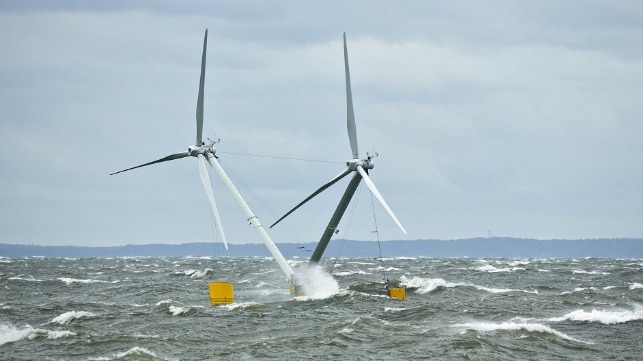Two-Headed Floating Offshore Wind Platform Passes Trials

The two-headed floating wind turbine prototype known as Nezzy² has completed a two-month testing period in the Bay of Greifswald off Germany's Baltic Sea coast.
The 18-meter, 1:10 scale model consists of two wind turbines on a floating platform. The test was run jointly by the German wind technology company Aerodyn Energiesysteme and the utility EnBW.
During the test, 180 sensors were used to take 30 different measurements to determine how the design functions in different wind directions and speeds, as well as different wave heights and directions. Towards the end of the trial, the prototype also withstood a significant storm: According to EnBW, if the weather conditions had been scaled up to match the future full size of Nezzy², the waves and winds were equivalent to a category four to five hurricane with waves reaching heights of up to 30 meters.
“For one and a half days, we were able to observe how Nezzy² remained stable in the water in extreme weather conditions. Our tests have shown that our model is now ready to be tested in the sea on a full-size scale,” says Aerodyn managing director Sönke Siegfriedsen.
Floating wind gives developers the possibility to deploy wind farms at water depths that exceed the maximum practically possible for bottom-fixed monopiles or jackets. This opens up much larger regions of the ocean to wind development, including some of the highest-potential waters in the world.
“We want to use the floating wind turbines ourselves for our international offshore projects. That is why we are really delighted that this technology can now be further developed with our support,” said Hannah König, head of wind and maritime technology at EnBW.
The 1:10 scale model has now been dismantled, and over the coming weeks, the partners will evaluate the data gathered during thetest run. The findings will be incorporated in the design of a full scale model, which is set to be tested in China at the end of 2021 or start of 2022.
